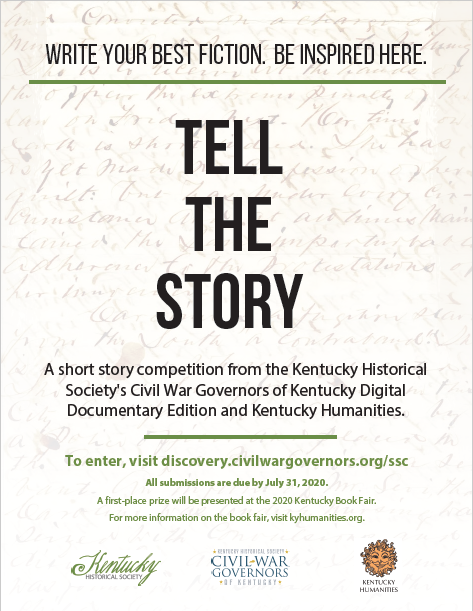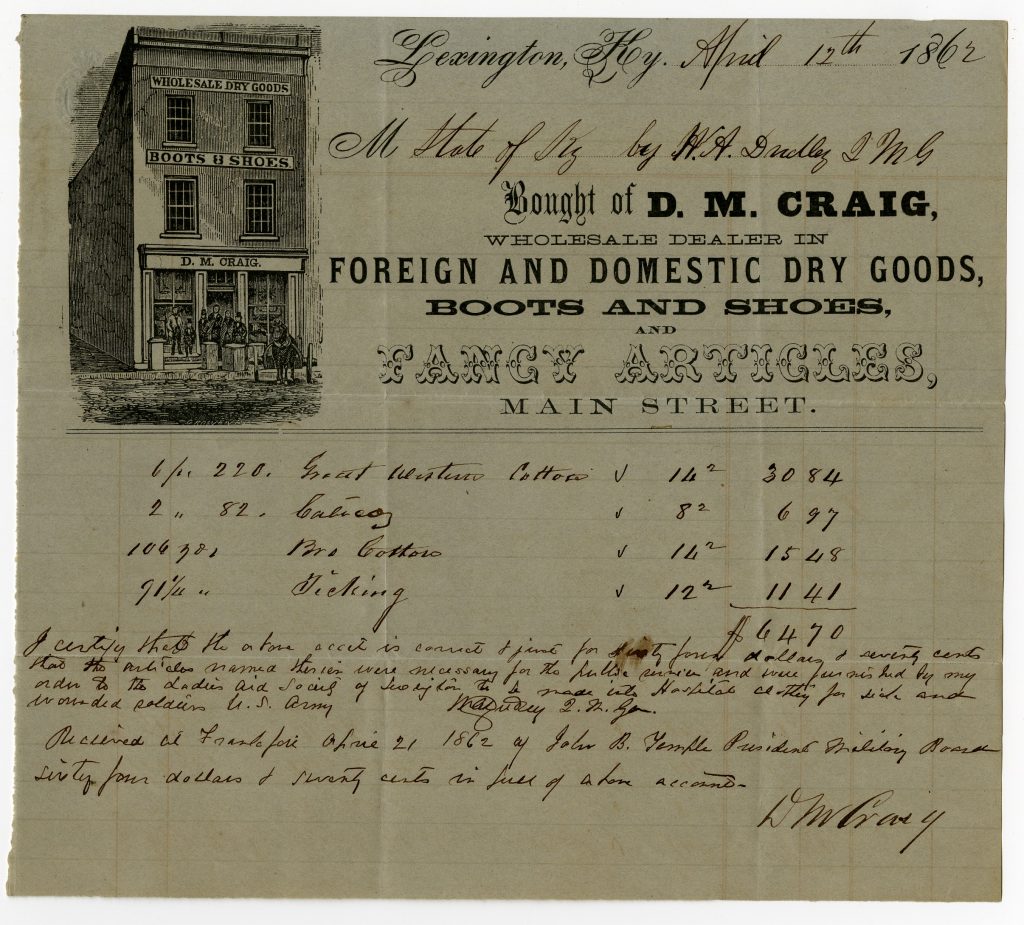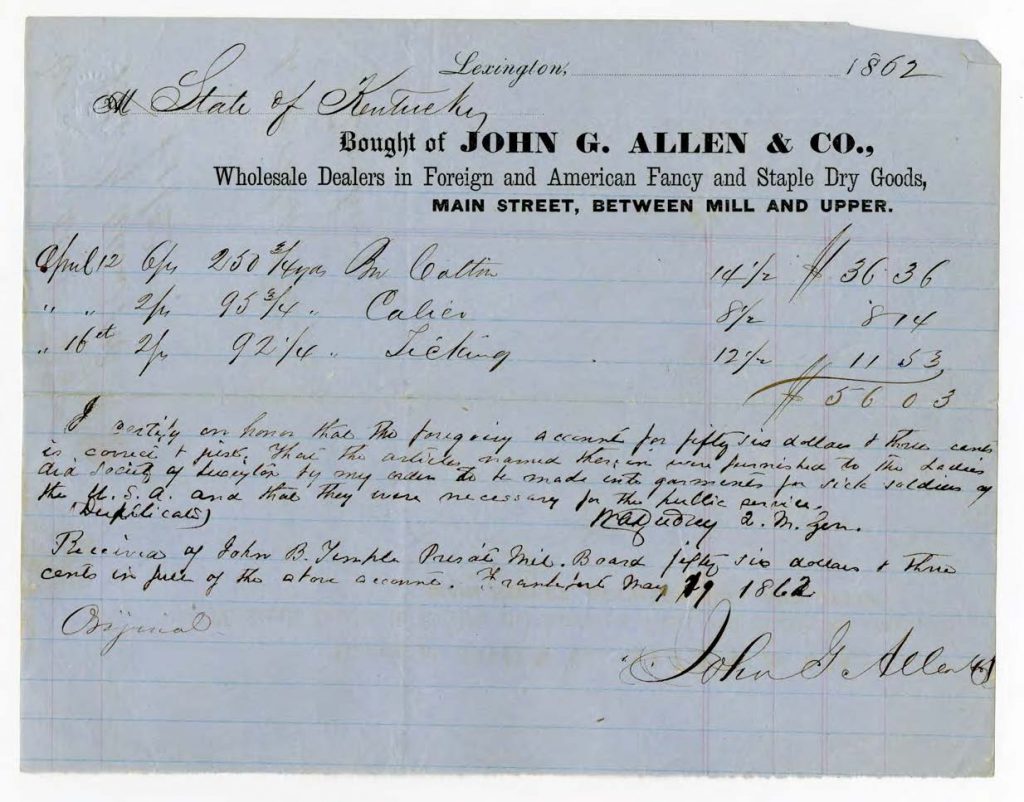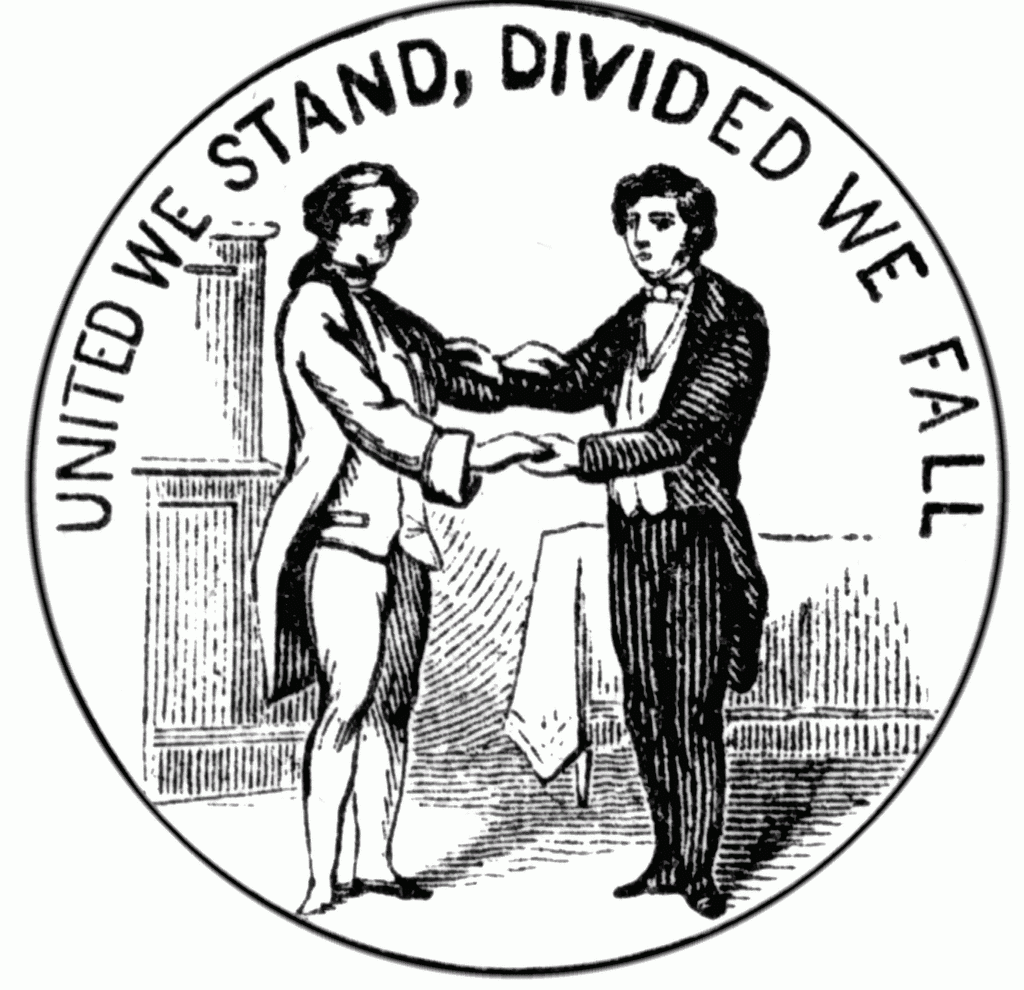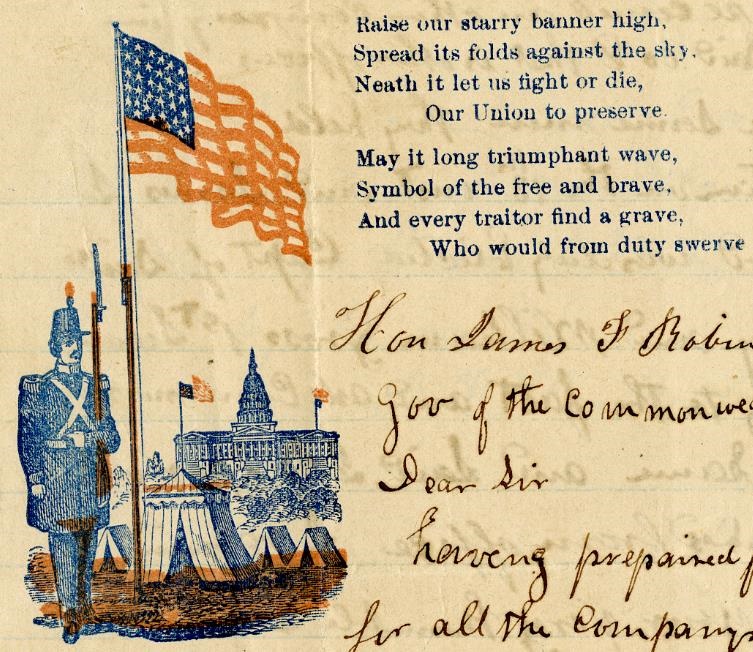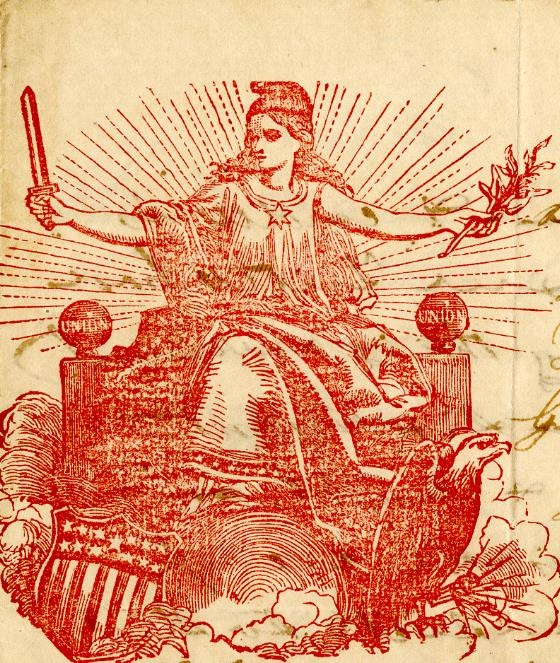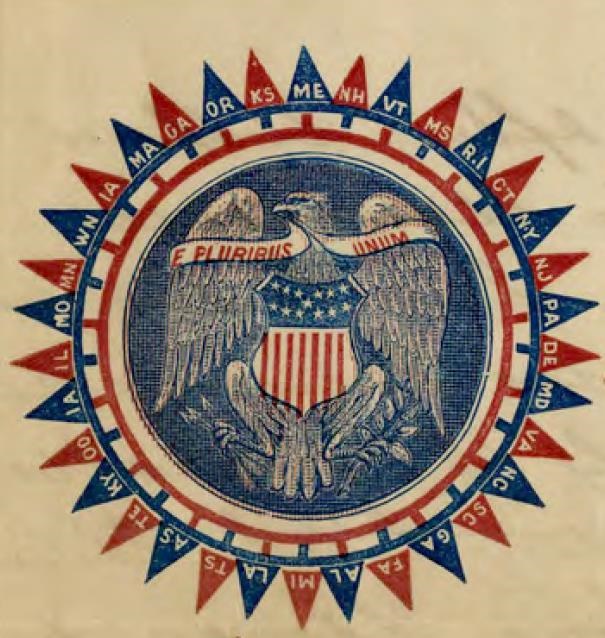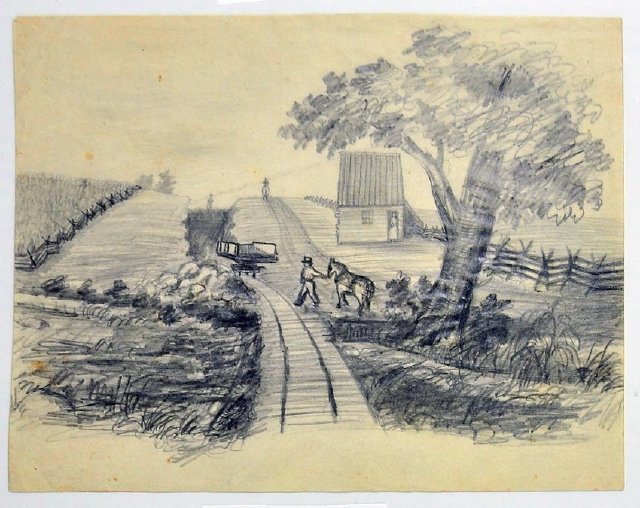In late 1863 George C. Hallet provided a prophetic statement on the future study of the Civil War in Kentucky. That November he appealed to state authorities in Frankfort for military assistance in order to counter pro-Confederate guerrillas operating nearby. More importantly, in his letter, Hallet noted that the “history of this stupendous rebellion is yet to be written and to be written in all truthfulness, the future historian must look to the public archives among which he will find the evidences of outrages committed on both sides” throughout the war.[1] For a digital humanities project such as CWGK, it would be difficult to locate a quote that better encapsulates the need for such a collection. Despite the contemporary utility of Hallet’s words, his appeal underscored the chaotic nature of wartime Kentucky.
Unlike other Border States or contested spaces in Civil War America, where irregular violence followed the presence of Union troops and emancipation, Kentucky offered a more chaotic, often unpredictable flurry of guerrilla warfare.[2] Part of that violence came from the operations of pro-Confederate guerrillas who resisted Union control and wartime policies. Another came from state-endorsed guerrilla hunters who pursued those irregular Confederates across the state.[3] If we take Hallet’s words seriously, little distinguished the guerrilla from the guerrilla-hunter. Both used murder, terror, and questionable (or openly defiant) interpretations of military law to achieve their own ends. The result was a violent landscape rife with unpredictability and something more akin to modern military conflicts in the Middle East, rather than the common battlefields and gallant soldiers of Civil War mythos.
How then should can we teach the chaos of Kentucky’s Civil War? This post offers suggestions on how educators might use CWGK to discuss guerrilla warfare in Kentucky (or the Civil War Era more broadly) with students in advanced high school or college settings.
1) The first step is provide students with a framework for what we traditionally understand the violence of the Civil War Era to represent. There are a few ways to approach this:
- Provide primary sources that discuss military combat (Samuel R. Watkins’ memoir Co. “Aytch”: The First Tennessee Regiment or a Side Show to the Big Show and Percival Oldershaw’s report in the Official Records of the War of the Rebellion Vol. 16, page 1064, both discuss the Battle of Perryville from a Confederate and Union perspective).
- Alternatively, you could look for a locally-based primary source, from a library, special collection, or a newspaper account like chroniclingamerica.loc.gov/
- Show the students a video clip—either from a documentary (such as Ken Burns’ Civil War or the History Channels’ Civil War Journal) or from a film (such as Glory or Gettysburg).
Regardless of the route, the primary goal is to make sure that students have a base understanding that most of the Civil War involved sizable armies engaging in structured combat. Especially early in the war, this involved the armies marching onto a battlefield and engaging in organized ranks until one (or both) sides retired from the field of battle.
2) After establishing that baseline, have the students read documents from CWGK’s guerrilla documents (http://discovery.civilwargovernors.org/exhibits/show/subject-guides/guerrilla-warfare). Here are a few specific suggestions:
- Richard J. Browne to Thomas E. Bramlette: Browne records how Confederate guerrillas attacked and terrorized Washington County, Kentucky in late 1864, robbing citizens and murdering former Union soldiers at home.
- Thomas E. Bramlette, Proclamation by the Governor: This message from Governor Bramlette laid out an aggressive policy of hostage taking for Union forces to punish Kentuckians who supported or encourage pro-Confederate guerrillas in the region.
- Commonwealth of Kentucky v. Susan Parker and W. Watkins, Judgment: In this note, Bramlette cited the struggles of William Watkins and his service to the state in the execution of James Keller (a Confederate guerrilla). In return for his deed, Bramlette remitted a fine against Watkins for operating a tippling house.
- Z. Wheat to Thomas E. Bramlette: Wheat writes on behalf of Edwin Terrell. Hired by Union officials, Terrell was a guerrilla hunter who killed a several Confederates, but was arrested for murder late in teh war. Bramlette, one of the men possibly responsible for hiring Terrell, denies Wheat’s request for a pardon. (See Hulbert “The Rise and Fall of Edwin Terrell, Guerrilla Hunter, U.S.A.,” Ohio Valley History, for a discussion of Terrell’s career as a guerrilla hunter).
3) This should build toward a discussion that compares and contrasts the traditional perceptions of warfare during the Civil War (step 1) and Kentucky’s guerrilla warfare (step 2). Here are some questions (with some of my own thoughts) that you can use to guide a conversation about irregular warfare.
- How does the war appear different on the traditional battlefield and on an irregular front?
- This is a simple question to initiate the conversation so that students can formulate thoughts on the different forms of combat during the war. I would use this question for students to summarize their thoughts on the materials they had read and draw comparisons.
- Who participated in these different forms of military action?
- The key here is to lead students to the realization that guerrilla warfare guerrilla violence could strike anywhere and at anyone, bringing civilians in as targets of both the Union and Confederate armies on the battlefield. In contrast, traditional military engagements mainly brought armies into conflict. While those traditional engagements can and did intersect with civilian populations, by and large, civilians were not the targets. Civilians who were especially vulnerable were those who aided Confederate guerrillas, Union soldiers returned from the front lines, as well as African Americans both enslaved and free.
- What forms of violence are justified during war?
- Any answer to this question is complicated as students might argue vastly different perspectives built off their personal experiences and beliefs. Some might say that war itself is immoral, while others could argue that any action that defeats the enemy is justified by victory. I would use this question to evaluate how contemporaries discussed what was acceptable in wartime: D. H. Dilbeck’s A More Civil War: How the Union Waged a Just War (UNC Press, 2020) is a good place to look for a recent discussion on this topic.
- What differentiates soldiers from guerrillas/guerrilla-hunters?
- This question touches on the earlier questions. While some guerrillas and guerrilla-hunters were supported by state or national governments, most operated well outside the confines of military law. Soldiers participated in a chain of command and acted as an extension of their government. Guerrillas could do the same, but also integrated personal and pecuniary motives into their actions. (Of course, if we look at the Fort Pillow Massacre, where Confederate soldiers brutally executed African American Union troops, guerrillas/guerrilla-hunters were not the only individuals who operated outside of normal, acceptable warfare).
Ultimately, these resources and questions offer a loose framework to use in a classroom setting. Feel free to substitute your own sources, readings, or questions. Hopefully, in these difficult times, this presents ideas for how educators can complicate how students understand military action in Civil War Kentucky.
[1] George C. Hallet to Daniel W. Lindsey, 24 November 1863, 37th – 76th Regiments Enrolled Militia Primary Source Documents (1861-1866), Box 80, Folder 863-64 FULTON COUNTY Recruiting and Raising Company 40th Rgt. Ky. Militia, Kentucky Department of Military Affairs, Frankfort, KY. Accessed via the Civil War Governors of Kentucky Digital Documentary Edition, discovery.civilwargovernors.org/document/KYR-0002-022-0011, (accessed May 13, 2020).
[2] Andrew Fialka, “Guerrillas in the Archive: Kentucky’s Irregular War through the Governor’s Eyes,” The Register of the Kentucky Historical Society Vol. 116, No. 2 (Spring 2018), 209-36.
[3] Joseph M. Beilein Jr., “The Terror of Kentucky: Sue Mundy’s Highly Gendered War against Convention,” The Register of the Kentucky Historical Society, Vol. 116, No. 2 (Spring 2018), 157-82; Matthew Christopher Hulbert “The Rise and Fall of Edwin Terrell, Guerrilla Hunter, U.S.A.,” Ohio Valley History, Vol. 18, No. 3 (Fall 2018), 42-61. See also The Civil War Guerrilla: Unfolding the Black Flag in History, Memory, and
Myth. Edited by Joseph M. Beilein Jr. and Matthew C. Hulbert (Lexington: University of Kentucky Press, 2015).

